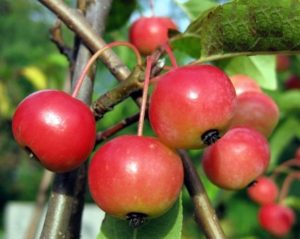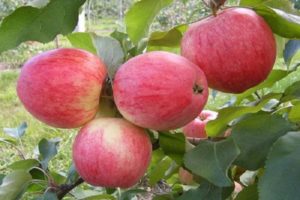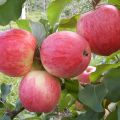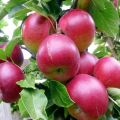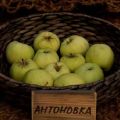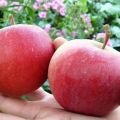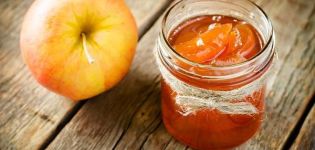Description and characteristics of the apple variety Grushovka Moskovskaya, cultivation features and history
Apple tree varieties Moskovskaya Grushovka is considered one of the oldest varieties of apple trees. The first mention of the variety dates back to the 17th century. The apple tree was grown mainly in the southern and middle parts of the Urals and the Siberian regions. But even now Moskovskaya Grushovka is grown everywhere in Russia. The variety is unpretentious and fruitful.
Description and characteristics of the Moscow Grushovka apple tree
Every gardener, before purchasing any kind of fruit trees for his site, must study all the characteristics. This will allow you not to be disappointed in your choice in the future and enjoy the yield and taste of the fruits.
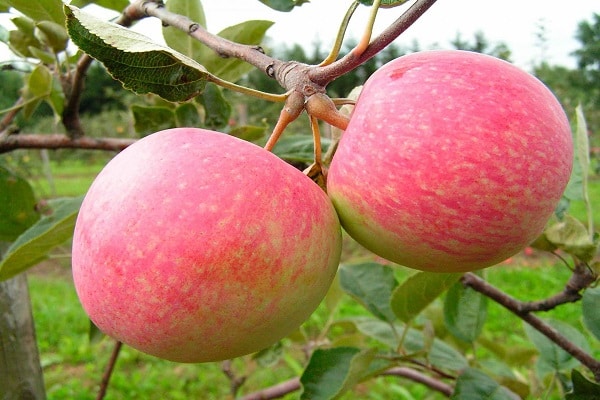
Subtypes
There are several subtypes of the Moscow Grushovka apple tree. The tree is early maturing and winter. Early ripening fruits begin to ripen at the end of July. And winter varieties ripen closer to autumn, but the harvest is stored until winter.
Early
The early Moskovskaya Grushovka variety is considered one of the most successful. It was created by crossing Moskovskaya Grushovka and Papirovka (the second grade is also called White filling). The early hybrid apples are twice the size of the parent variety.
The yield per adult tree is from 120 to 160 kg. Differs in frost resistance and resistance to scab, powdery mildew and fruit rot. The downside of the hybrid is that the apples ripen gradually, so only summer residents prefer to grow it.
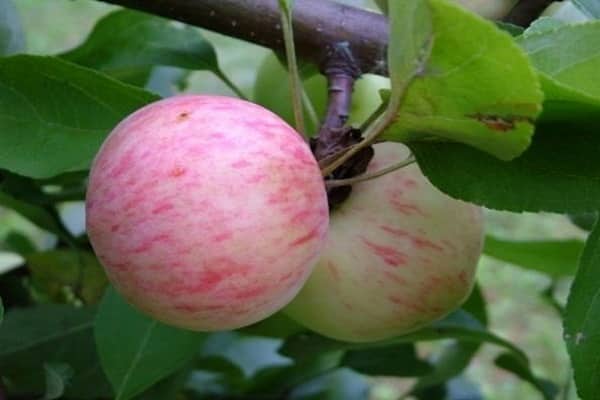
Winter
The winter variety was obtained by crossing Moskovskaya Grushovka and Frenchwoman Kronsel. Just like the early hybrid, the winter one has larger fruits compared to the parent variety. The yield is high, up to 200 kg of fruits are harvested from one adult tree.
The disadvantages of the hybrid are low resistance to frost and weak immunity. A tree without care often suffers from rot and other diseases of fruit trees.
Tree height and crown width
Apple trees reach a height of 7 m, so the tree needs to be pruned every year. The formation of the crown will simplify harvesting and prevent the apple tree from growing too high in height. Young trees resemble a cone in shape. After a few years, due to the growth of the crown, the tree grows in width, and gradually acquires a spherical shape.
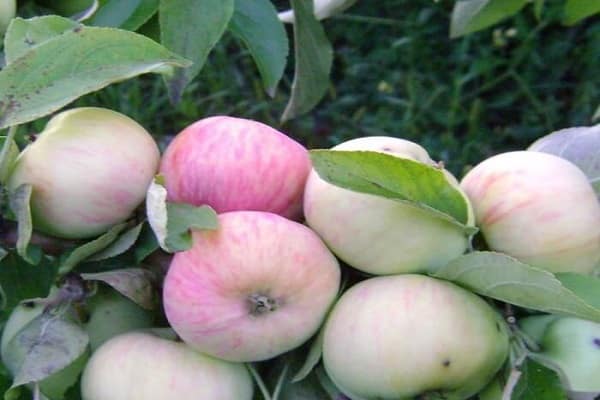
The beginning of fruiting
After planting the seedling in a permanent place, the apple tree begins to bear fruit in 4-5 years. If the tree is vigorous, then fruiting occurs several years later, 6-7 years after planting.
The shape and weight of apples and their color
The shape of the fruits of apples is round, turnip. The fruits are small in size, the maximum weight is up to 130 g. The peel is light yellow in color with a red blush. The pulp is white-yellow in color, aromatic. The peduncle is located deep inside the funnel.
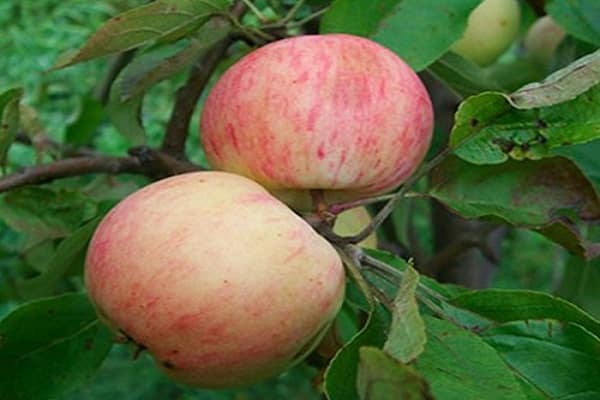
Flavor, aroma and tasting score
The fruit has a pleasant taste, the pulp is juicy and sweet, with a slight sour taste. The pulp does not have a pronounced apple aroma; over time, the aroma increases slightly, but not significantly. The tasting score is 4.3 points out of 5. Apples are suitable for fresh consumption and for preparing compotes, preserves and purees.
Ripening period
Apple-tree Moskovskaya Grushovka belongs to the early varieties, and the first fruits ripen in the first decade of August. Some winter hybrids ripen in early September.
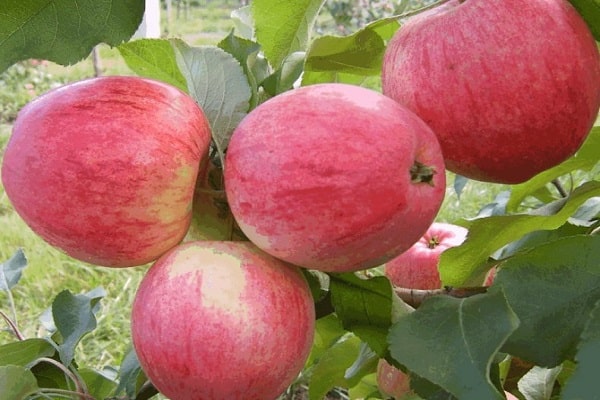
Winter hardiness
One of the advantages of the variety is its frost resistance. Apple trees are able to withstand temperatures up to -50 degrees. This quality allows you to grow an apple tree even on the territory of harsh Siberia.
Disease resistance
Most often, the tree suffers from fungal diseases. These include scab and moniliosis. To prevent the appearance of fungi on an apple tree, it is treated with fungicides several times per season.
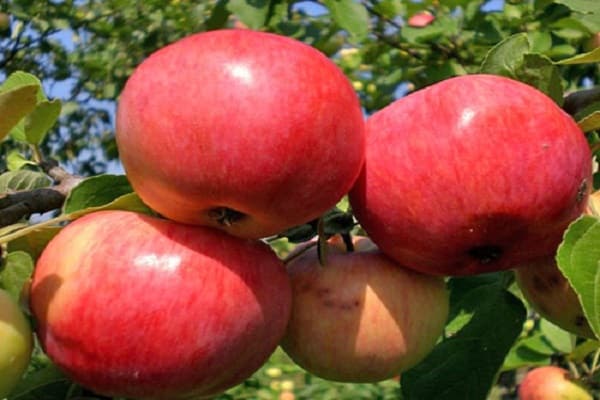
Pollinating varieties
Moskovskaya Grushovka belongs to self-infertile varieties, therefore, pollinator varieties are planted nearby to increase yields. These include:
- Chinese woman;
- Candy;
- White filling;
- Antonovka;
- Anis Striped.
If you plant only Moscow Grushovka in a garden without neighboring apple trees, little inflorescences and ovaries will form. Which in turn will affect the yield.
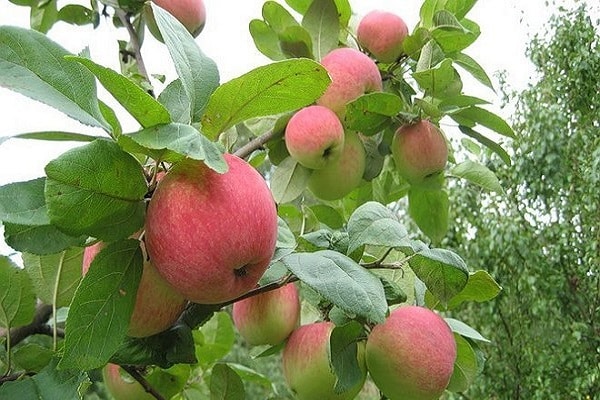
Advantages and disadvantages
The advantages of the Moscow Grushovka variety include:
- Frost resistance.
- Productivity.
- Unpretentious care.
- Fruit taste.
- Fruiting.
- Early ripening of apples.
Among the disadvantages are:
- Weak immunity to fungal diseases.
- The height of the tree.
- A small mass of apples.
- The fruits are not fragrant.
Despite the fact that the variety has many shortcomings, now you can find hybrids based on Moscow, where all the disadvantages of the variety are corrected.
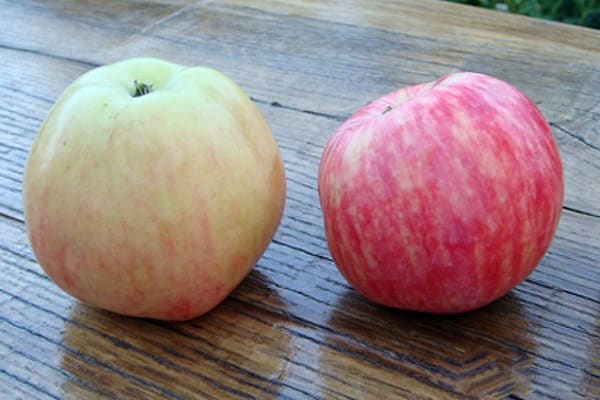
Breeding features
Since the Moskovskaya Grushovka variety is self-fertile, other varieties of apple trees are planted no more than 60 cm away from the tree. Neighborhood with other hybrids will increase reproduction and the appearance of ovaries, since bees will be able to transfer pollen from tree to tree.
How to plant a seedling
During the planting of seedlings, attention is paid to the composition of the soil, the location and occurrence of groundwater near the chosen place.
Landing place
The apple tree prefers to grow in open, sunny areas. It also transfers partial shade. The main thing is not to plant seedlings in places where they will be in the shade all day.
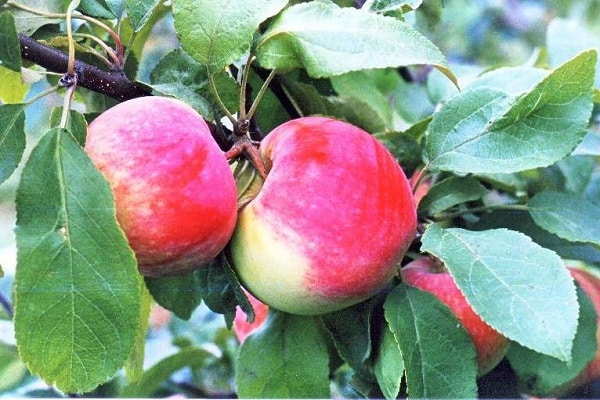
Soil requirements
The apple tree is planted on loamy or sandy loam soils. Black soil is also suitable. Preference should be given to loose, fertile soil with neutral acidity.
How to choose the right seedling
The seedlings should be healthy, with no signs of damage. The bark is dense. The branches are not broken. The root system is powerful, and the roots themselves are elastic.
When to plant a variety
In spring, the apple tree is planted from mid-April to May. In different regions, the spring planting dates for seedlings vary. In the south, planting is carried out a little earlier than in the north. In autumn, seedlings are planted before the onset of cold weather, in late August - early September. During this time, the seedlings should have time to take root.
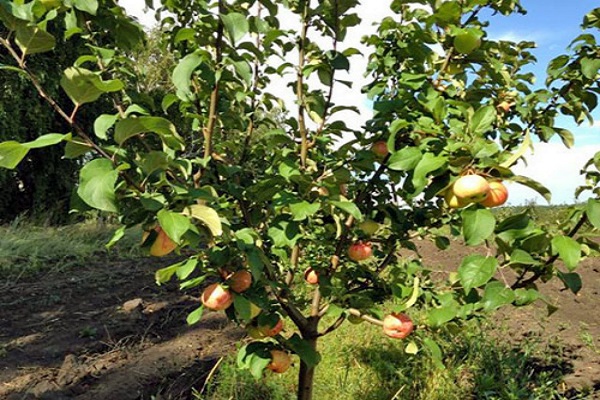
Planting process
Sapling planting process:
- Dig a hole 1 m deep.
- Pour mineral fertilizers, manure and wood ash to the bottom.
- Leave the pit in this form for 2-3 weeks.
- After 2-3 weeks, the seedling is planted in a prepared hole.
- Place the seedling and gently straighten the roots.
- Cover with soil and tamp near the trunk.
- Drive in a peg next to it and tie the trunk to it.
- Then pour abundantly with warm water.
At first, the seedling is often watered.
Apple tree care
Taking care of the apple tree includes organizing watering, fertilizing, weeding the soil around the trunk and forming the crown. It is also important to pay attention to the prevention of diseases and insects.
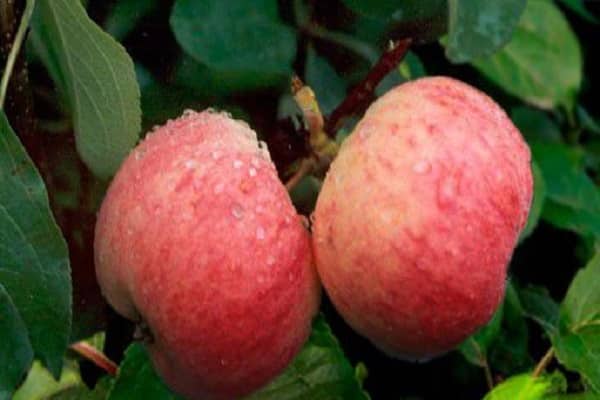
How to water
With the onset of spring and until August, young seedlings are watered 3 times a week. Watering is stopped in August. Mature trees are watered several times a month. If the summer is hot, then the amount of watering should be increased. Strong overdrying of the soil must not be allowed.
Soil care
Several times a week, before watering, the soil is weeded and weeds are removed near the tree.
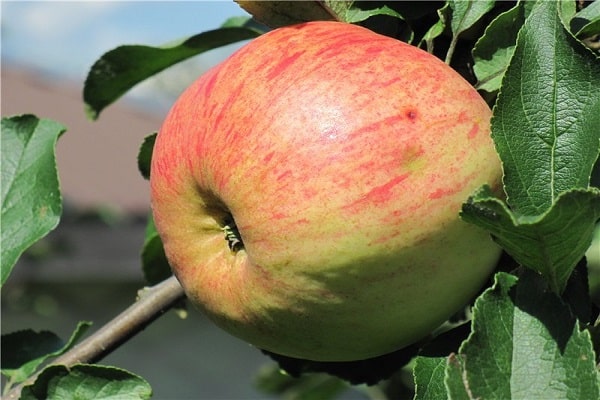
Top dressing of an apple tree
During the season, feeding is applied 4 times:
- The first time fertilization is applied in April. Nitrogen-containing fertilizers are used as fertilizer.
- The second time feeding is applied during the flowering period. Nitrogen-containing fertilizers are also added, in addition, wood ash and manure are suitable.
- The third feeding is carried out at the time of the formation of ovaries. Potassium and phosphorus are added to the soil. Organic dressings are also introduced.
- The last dressing prepares the tree for winter. During this period, nitrogen should not be added. Manure, compost and wood ash are added to the soil.
Depending on the tree's appearance, it can be fed more often.

Pruning varieties
Every spring, all dry and diseased branches are cut off from the apple tree. Young branches are also cut off, leaving a few skeletal branches.
Preparing for winter
Since the variety is winter-hardy, preparation for the winter of the apple tree is not required. In the fall, they just dig up the soil around the plant.
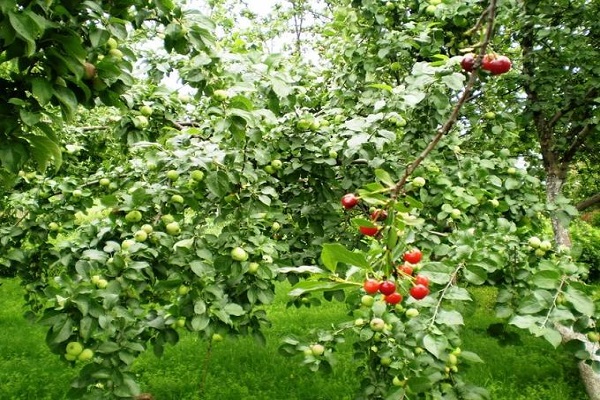
Diseases and pests
With the onset of spring, the apple tree is sprayed with a solution of Bordeaux liquid. It is also important to regularly remove weeds to prevent fungi and insects from growing.
Harvesting and storage
The apples are harvested in August. It is better to pick the fruits right away, before they have time to fall to the ground. The harvested crop is stored in a cool room at temperatures up to +15 degrees. Subject to the storage conditions, the apples will lie until late autumn.

